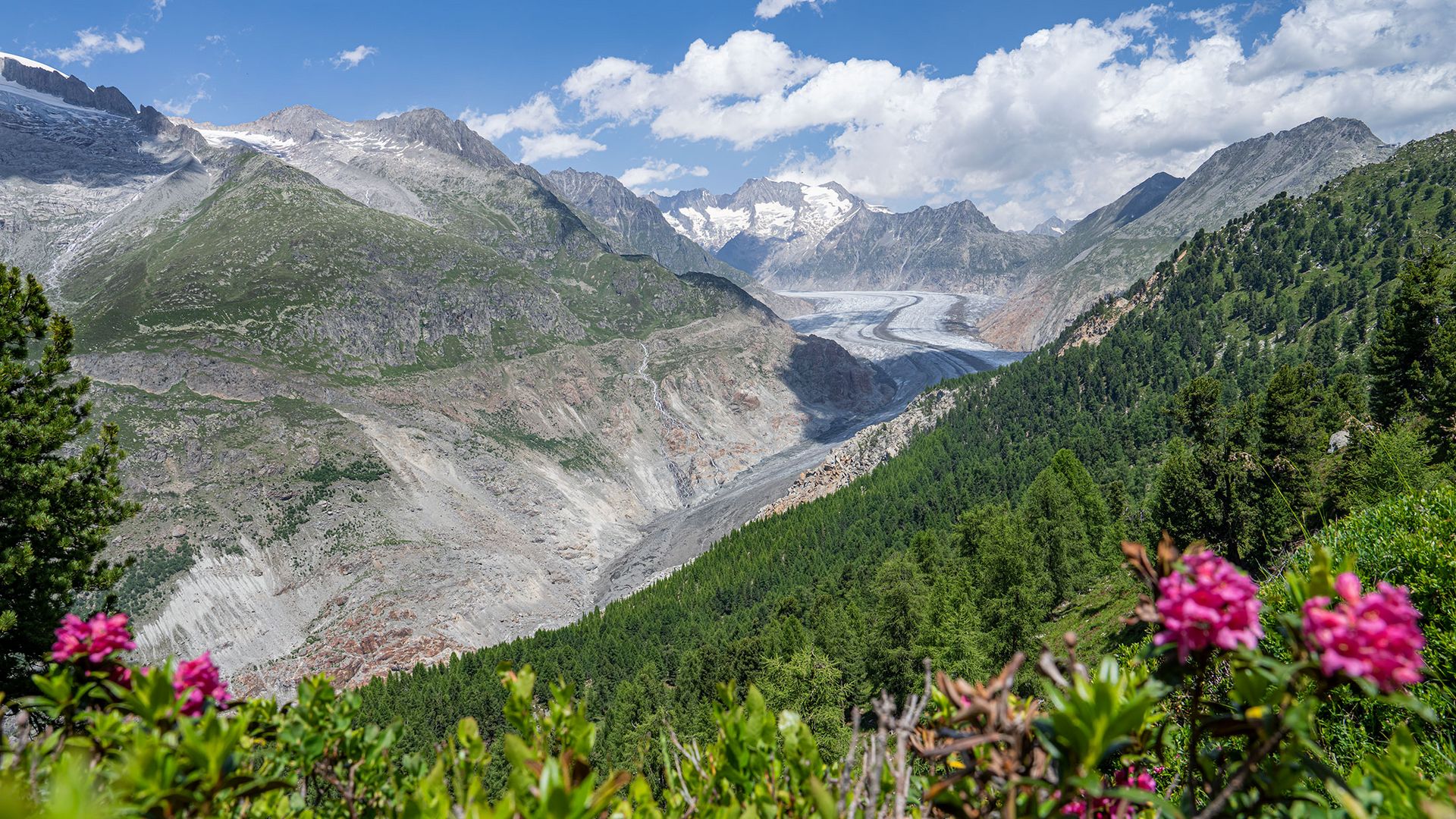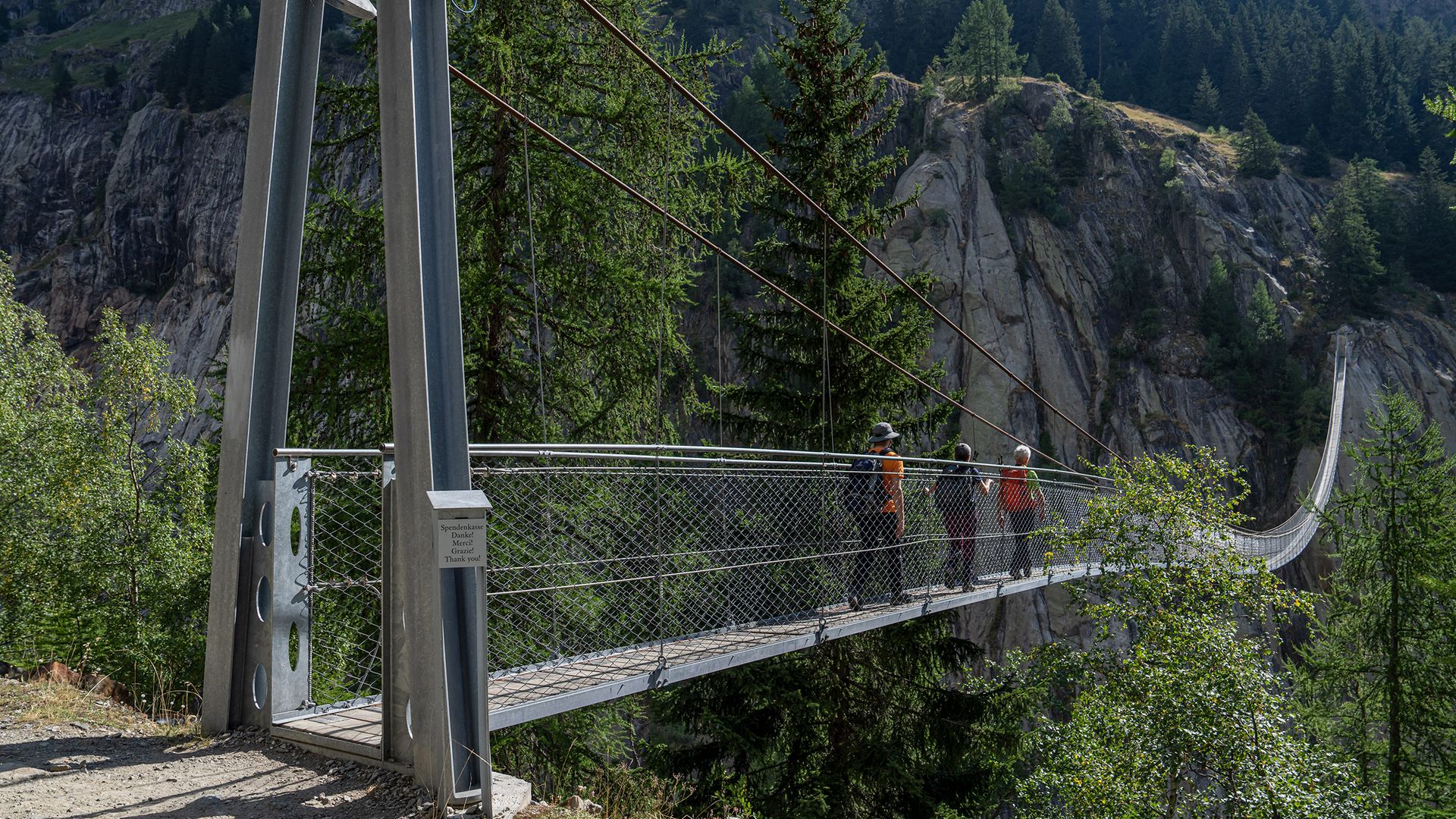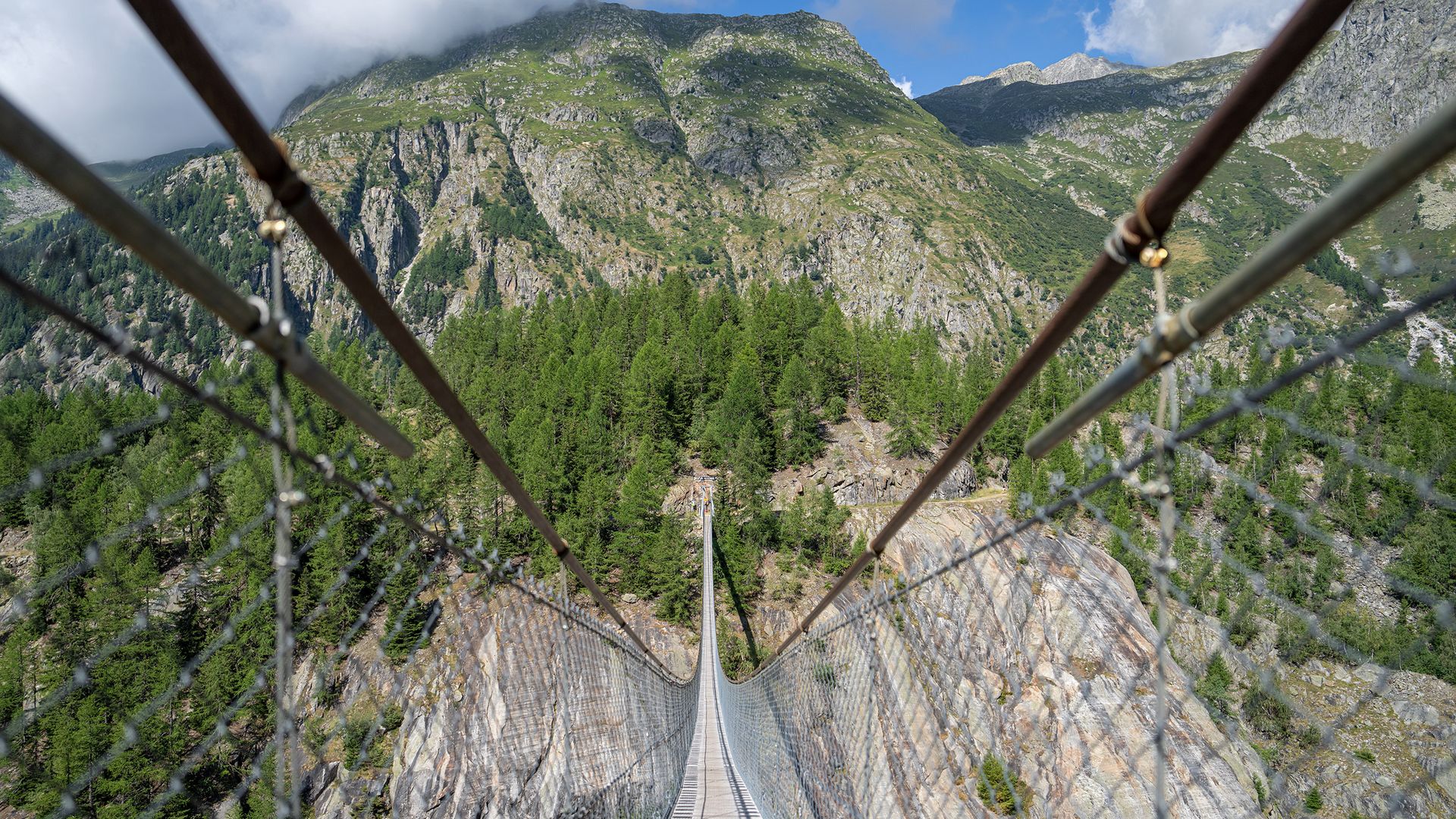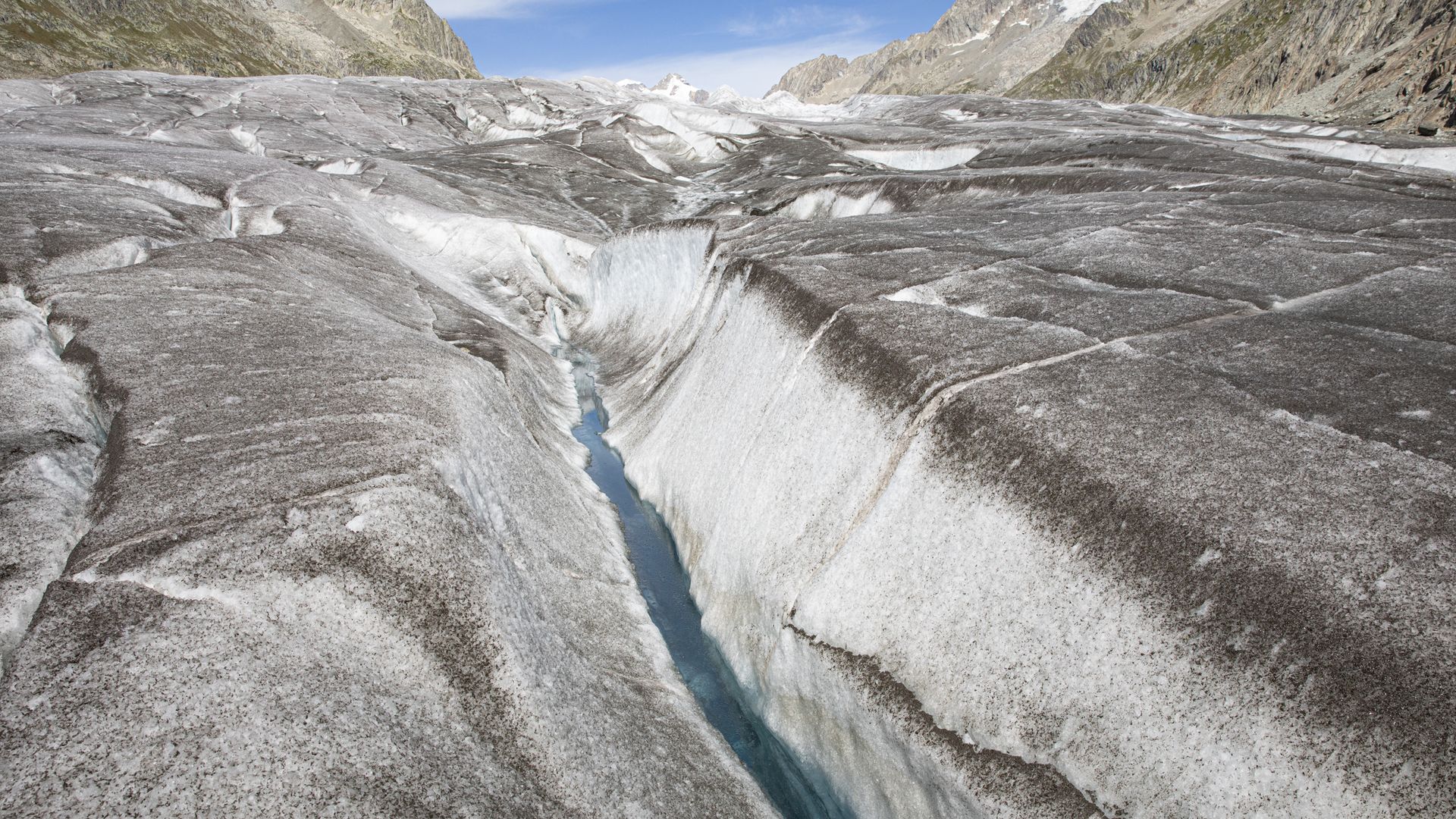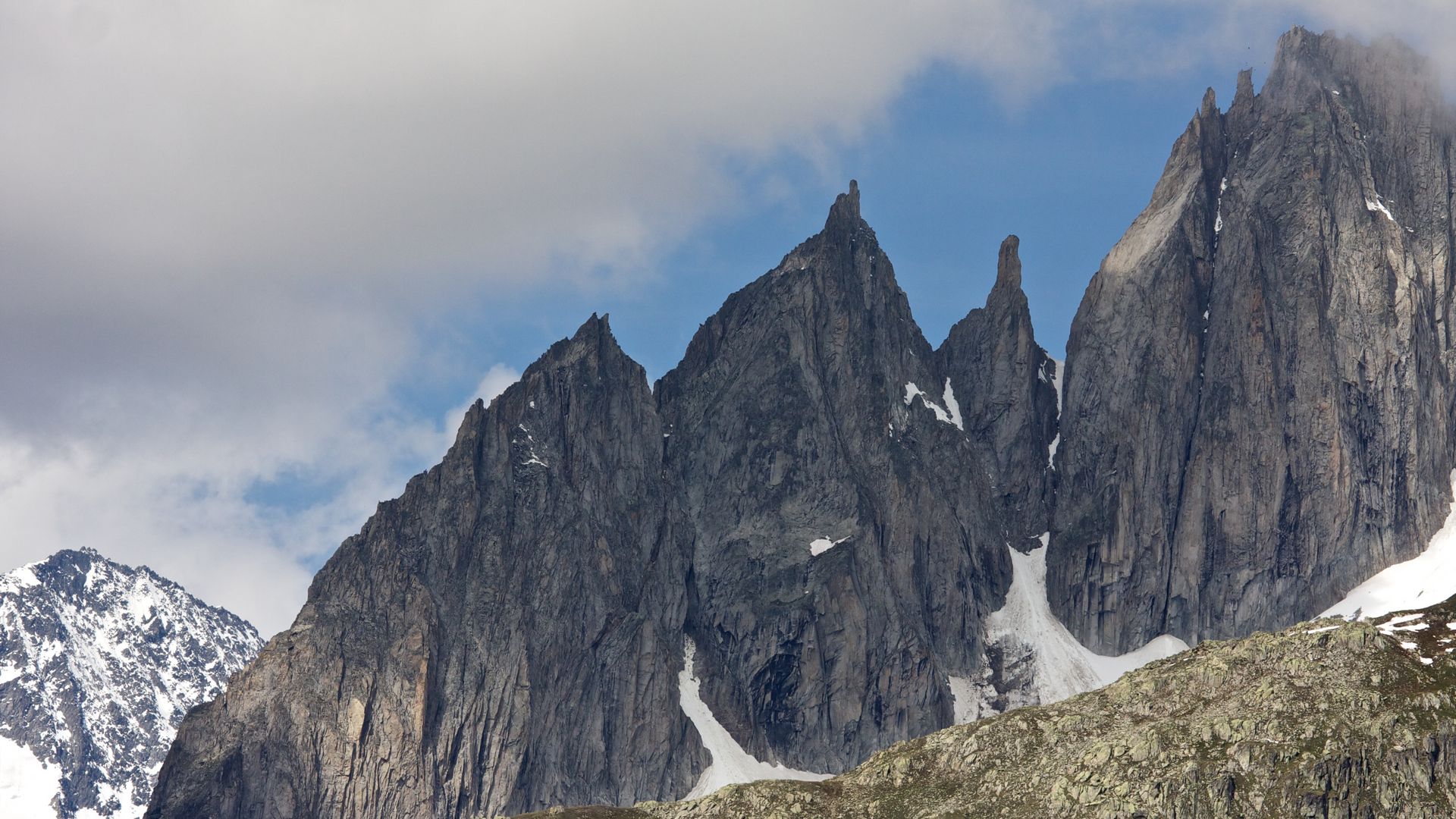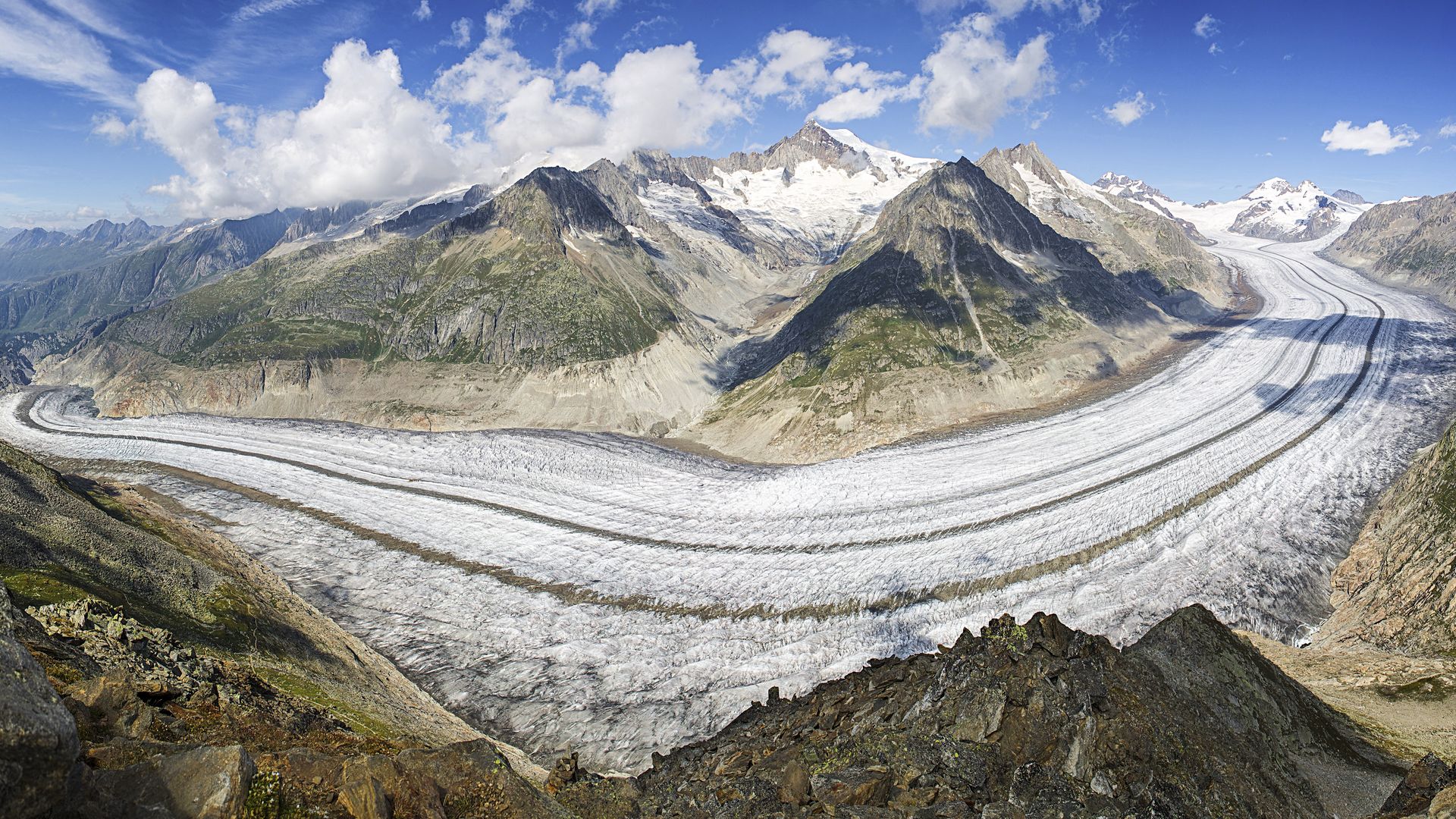In front of the tourist office in Bellwald, you can find out about the World Heritage Site and above all about the special features of culture, history and natural landscapes at an information point.
Of the 824 square kilometres covered by the World Heritage Site, 34 per cent are glaciated. This largest contiguous ice surface in the Alps is made up of around 70 glaciers of varying sizes as well as 229 firn and glacier patches. The centrepiece is the Great Aletsch Glacier, but other ice streams such as the Fiesch Glacier are also dominant elements of the World Heritage Site.
The Jungfrau-Aletsch-Bietschhorn region was declared a UNESCO World Heritage Site in December 2001. Since the area was extended in 2007 by eleven municipalities and 53 percent of the surface area at that time, Bellwald is now one of a total of 23 World Heritage municipalities in the cantons of Valais and Bern.
The core zone of the Swiss Alps Jungfrau-Aletsch World Heritage Site consists mainly of natural landscapes of the high mountains. 85 percent of the area lies at an altitude of over 2,000 metres. Around 50 mountain peaks are higher than 3,500 metres, nine even higher than 4,000 metres. The proportion of unproductive vegetation and vegetation-free areas is almost 90 percent. The UNESCO World Heritage Site Swiss Alps Jungfrau-Aletsch is one of the least human-influenced areas of the entire Alpine arc. This unspoiltness, surrounded by settlements and small-scale cultural landscapes, is one of the outstanding characteristics of the World Natural Heritage Site.
According to the Operational Guidelines for the Implementation of the World Heritage Convention, there are four criteria for inclusion on the World Heritage List, at least one of which must be fulfilled.
According to the IUCN (International Union for Conservation of Nature), the Swiss Alps Jungfrau-Aletsch site meets the following three of the four criteria:
- Exceptional natural beauty and associated attraction: the area has played an important role in European literature, art, mountaineering and Alpine tourism.
- Impressive example of Alpine mountain building: This is of considerable interest in the context of glacial history and ongoing processes, especially in relation to climate change.
- Enormous diversity of alpine and subalpine habitats: Great examples of ecological succession are present and the global phenomenon of climate change is particularly observable in this region.
The beauty of the area has always attracted international clientele and is known as one of the most spectacular mountain regions in the world. See for yourself the breathtaking scenery in this unique recreational area! In summer, you can enjoy countless hiking opportunities, while in winter you will find top-prepared pistes every day in the Bellwald ski area as well as in the Aletsch Arena.
